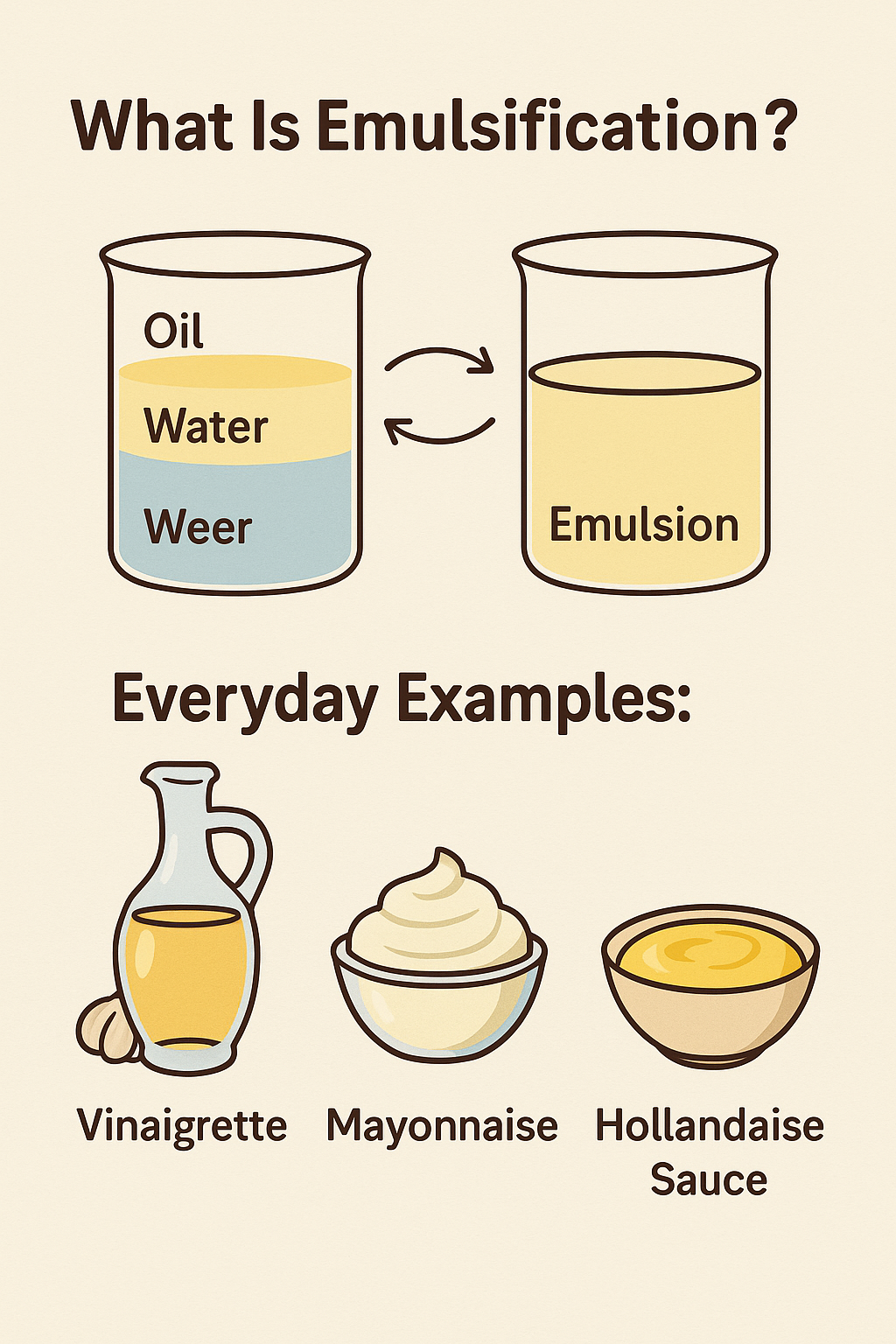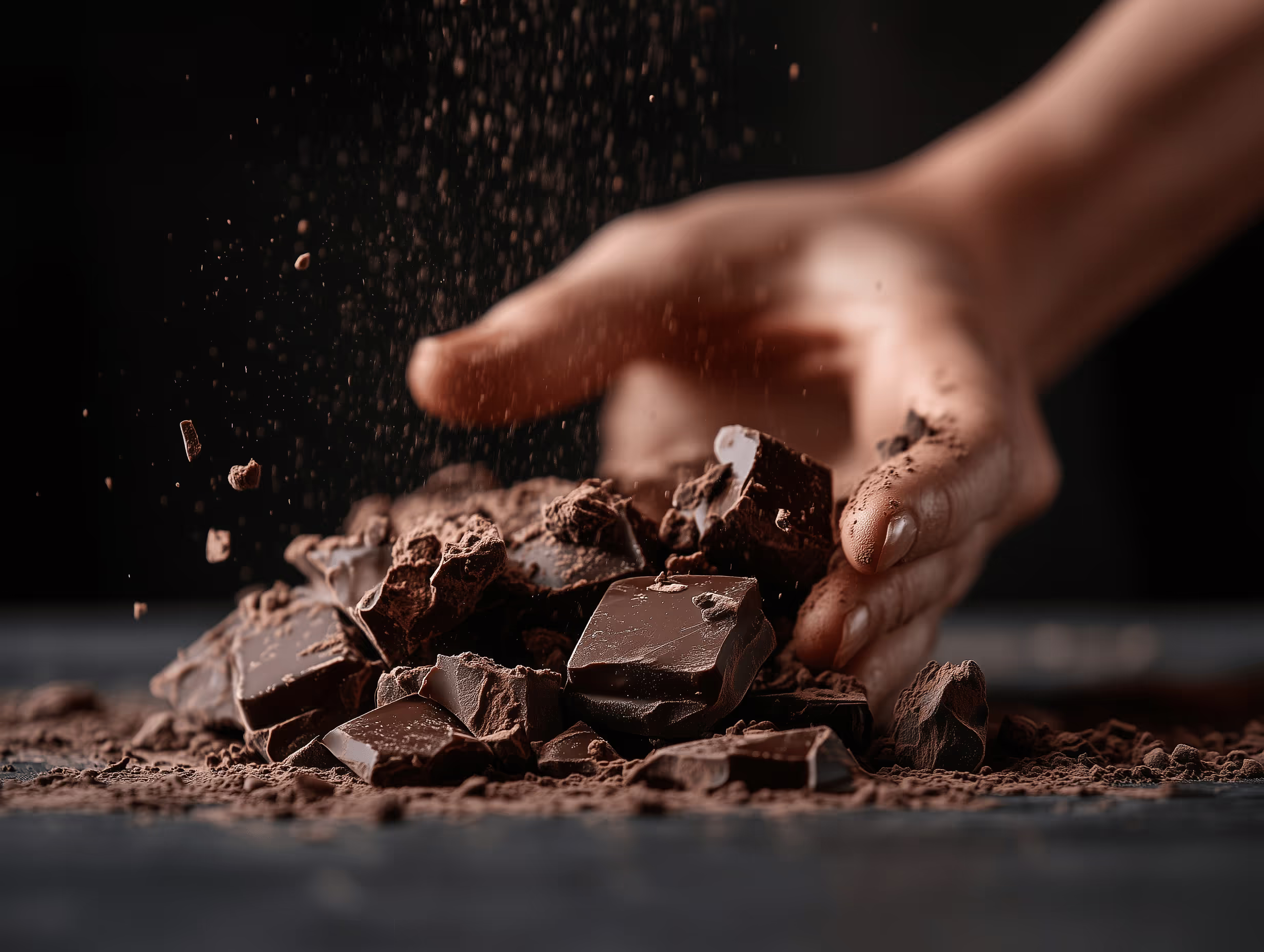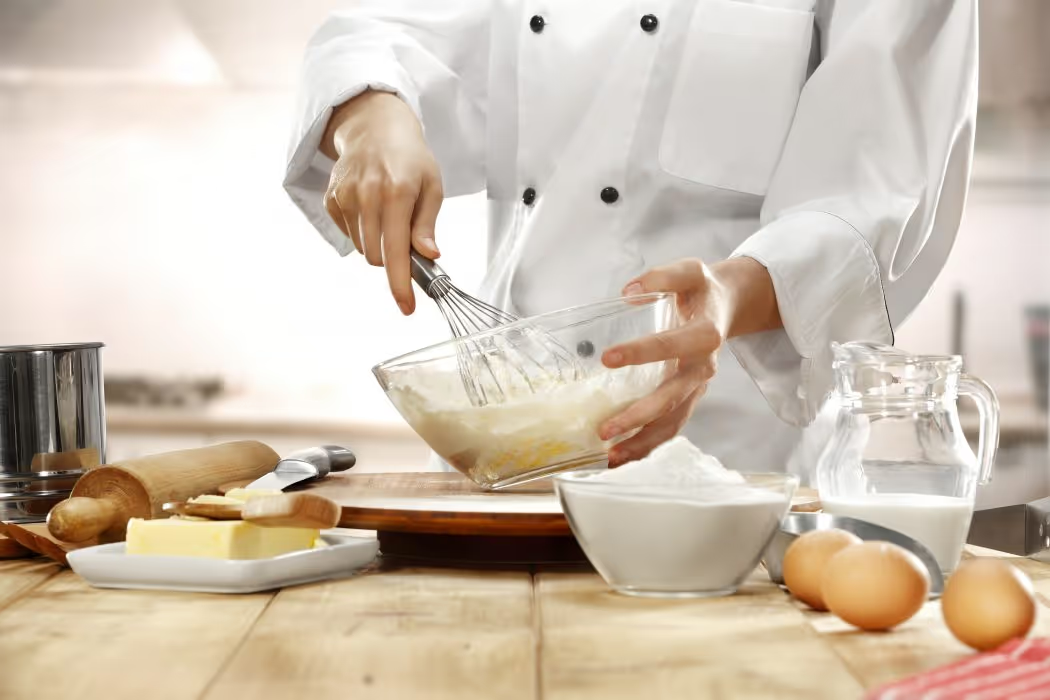Why does your homemade vinaigrette always separate while the store-bought one stays perfectly smooth? How does mayonnaise hold its thick, creamy texture with just oil and egg? And what’s the trick behind that silky hollandaise sauce that doesn’t break?
Welcome to the surprisingly simple, incredibly useful world of emulsification — the kitchen technique that turns incompatible ingredients like oil and water into deliciously unified sauces, dressings, and more.
Whether you’re whisking up a tangy vinaigrette or crafting a restaurant-quality aioli, understanding the science behind emulsions can take your cooking from good to gourmet. The best part? You don’t need fancy tools or a chemistry degree to master it, just a few ingredients, a bit of technique, and a willingness to stir things up.
In this blog, we’ll break down what emulsification really is, explore why emulsions break, and show you how to create stable, flavor-packed blends every time. If you've ever struggled with a split dressing or wondered how to make your sauces look and taste like they came from a pro kitchen, this guide is for you.
1. What Is Emulsification?
Emulsification is the process of combining two liquids that typically don't mix well, such as oil and water. By breaking one liquid into tiny droplets and suspending them in the other, you create a stable mixture known as an emulsion.
Everyday Examples:

- Vinaigrette: A mixture of oil and vinegar, often stabilized with mustard or garlic.
- Mayonnaise: Oil and egg yolk emulsified together, creating a thick, creamy texture.
- Hollandaise Sauce: Melted butter and egg yolks combined to form a rich, velvety sauce.
Emulsions can be categorized into:
- Temporary Emulsions: Separate upon standing (e.g., vinaigrette).
- Semi-Permanent Emulsions: Separate slowly (e.g., mayonnaise).
- Permanent Emulsions: Do not separate (e.g., hollandaise).
2. How Emulsions Work (The Science, Simplified)
At the heart of emulsification are emulsifying agents, substances that help stabilize the mixture by reducing surface tension between the oil and water. Common emulsifiers include:
- Egg yolks: Contain lecithin, a powerful emulsifier.
- Mustard: Acts as a stabilizer in dressings.
- Garlic: Adds flavor and aids in emulsification.
The process involves:
- Dispersing: Breaking the oil into tiny droplets.
- Stabilizing: Using emulsifiers to keep droplets suspended.
- Maintaining: Ensuring the emulsion remains stable over time.
3. Common Emulsified Sauces and Dressings (and When to Use Them)
- Vinaigrette: Ideal for salads, combining oil, vinegar, and seasonings.
- Mayonnaise: A base for sandwiches, coleslaw, and dips.
- Aioli: A garlicky variation of mayonnaise, perfect for seafood.
- Hollandaise: A rich sauce for eggs Benedict or steamed vegetables.
- Caesar Dressing: Creamy dressing for Caesar salads.
- Beurre Blanc: A butter-based sauce for fish dishes.
- Dairy-Based Dressings: Such as ranch or blue cheese, offering creamy textures.
4. Step-by-Step Guide: How to Emulsify Like a Pro

- Choose Your Tools: A whisk, bowl, blender, or immersion blender.
- Select an Emulsifier: Depending on the recipe, choose egg yolk, mustard, or garlic.
- Follow Correct Ratios: Typically, a 2:1 ratio of oil to vinegar for vinaigrettes.
- Master the Technique:
- Drizzle Method: Slowly add oil while whisking vigorously.
- Blender Method: Blend oil into the other ingredients gradually.
- Drizzle Method: Slowly add oil while whisking vigorously.
- Hot vs. Cold Emulsions:
- Cold Emulsions: Combine ingredients at room temperature.
- Hot Emulsions: Gently heat ingredients to the desired temperature.
- Cold Emulsions: Combine ingredients at room temperature.
5. Troubleshooting: Why Your Sauce Broke and How to Fix It
Emulsions can break due to:
- Adding oil too quickly: Causes separation.
- Wrong temperature: Too hot or too cold can destabilize the emulsion.
- Weak emulsifier: Insufficient emulsifying agent leads to failure.
Fixes:
- Start fresh: Begin with a new egg yolk and slowly incorporate the broken mixture.
- Add an emulsifier: Mix in a small amount of mustard or egg yolk.
- Re-blend: Use a blender to re-emulsify the sauce.
6. Bonus Tips for Perfect Emulsions Every Time
- Use room temperature ingredients: Ensures better emulsification.
- Start small: Begin with a small batch to perfect the technique.
- Add seasoning at the right time: Season after emulsification to avoid disrupting the mixture.
- Store properly: Keep emulsions in airtight containers to maintain freshness.
- Re-emulsify if needed: Shake or blend before serving if separation occurs.
Emulsification is a fundamental technique in cooking that enhances the texture and flavor of sauces and dressings. By understanding the science behind it and practicing the methods outlined, you can create professional-quality emulsions at home. Experiment with different emulsifiers and techniques to find what works best for you, and enjoy the satisfaction of mastering this essential culinary skill.








